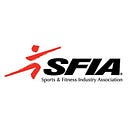2020 CES Rundown — The SFIA Perspective
SFIA recently returned from the 2020 Consumer Electronics Show (CES) in Las Vegas from January 6–10. CES is one of the most well-known, reputable trade shows in the world, as it showcases the newest innovations across all segments, ranging from transportation to fitness to artificial intelligence, and so much more.
Of course, SFIA has special interest in the sports, fitness and start-up market, so we spent most of our time in Fitness, Health & Wellness, Sports Technology and at Eureka Park (home to the start-ups). We were also happy to see two SFIA members exhibiting: ASICS presenting their first smart shoe prototype (more here) and Amazon incorporating Alexa into every product imaginable (more here). The show is full of integrated technology, as companies are constantly figuring out new ways to make products “smart”, or even “smarter”, and more efficient than ever before.
In the fitness space, wearables are alive and well. It seemed that just about everything had a focus on measuring and improving your fitness goals. It was interesting to note that major brands, like Fitbit, were absent from the show floor; instead, they had a private suite that was invite-only. However, there were still a significant amount of wearable companies exhibiting. The most prominent trend in the fitness space was collecting more data on personal measurements and movements, and having more “smart” devices assisting you with information gathering. Fitness tech has moved past just data collection and analysis, and now provides personalized plans on how to capitalize and take advantage of that personalized information. The products would tell you everything from what to eat, how much to work out, how to work out, when to rest, and on top of all that, track your progress along the way. Wearables were heavy in this market, but we also noticed that while the Fitness space of the show is still strong, it is clearly blending with Health & Wellness. Many companies had less fitness-specific products, and more products that generally contributed to fitness, health and wellness overall. Essentially every product in this space incorporated a sensor, a measurement device and/or an improvement/recovery system.
As far as wearables, they were not just popular in the Fitness category, the wearables aisle in Eureka Park had heavy foot traffic, as well. As usual, all of Eureka Park was buzzing with excitement. The set-up of the Eureka Park was a little bit different this year, as there was a significant increase in countries reserving large booths and then hosting 10–30 start-ups from that country at that booth. It was an interesting new way to experience the start-up space from a different perspective. As some of world’s greatest entrepreneurs frequent the show floor, this event is an exhibitor’s prime opportunity for an investment, and the start-ups were eager.
On another note, the Sports Tech space was not up to par. It was significantly smaller this year, with only five exhibitors and only one interactive space, which hosted multiple start-ups. Compared to the Sands Expo, where the rest of CES was hosted, the Sports Tech show was in Aria (a location change that happened in 2019), and well, it might have well been on another planet.
Even though the Sports Tech space left a lot to be desired, CES as a whole was more massive and packed than ever (as it seems to be each year). And while people and exhibitors packed in the show floor, we did notice that the big brands were missing. While some of them, like Fitbit, were in attendance, they remained in their own private suites.
Upon returning and reflecting on everything we saw at CES, it was another year of unimaginable products coming to life. Every product has turned “smart.” The world of analytics, data capture, and statistics have hit a new level. Information is being tracked and used instantly. And now, products are showing you how to properly use all that information you have collected. After many years of attending, we have seen the evolution from traditional pedometers and calorie counters to products that measure metabolism, heart rate, fatigue, balance, sleep, and the list goes on… And we’re excited to see this new wave of virtual reality and integrated technology continue to change sports and fitness as we know it. We just hope that next year, the Sports Tech space will be revived, and we will be able to see more of the impact these changes have had the world of sports, specifically.
